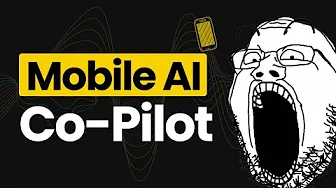Fine-Tuning Large Language Models (LLMs)
Fine-tuning is a critical process in the development and application of large language models (LLMs). It involves adjusting a pre-trained model to perform better on a specific task or dataset. This process is essential because while pre-trained models have a broad understanding of language, they may not be optimized for the nuances of a particular domain or application.
The Fine-Tuning Process
The fine-tuning process typically follows these steps:
- Selecting a Pre-Trained Model: The first step is to choose an appropriate pre-trained model as the starting point. This could be a general-purpose model like BERT or a more specialized one.
- Preparing the Dataset: A dataset of input-output pairs is required, where the input is what you provide to the model, and the output is the expected response from the model. This dataset should be representative of the task at hand.
- Adjusting Model Parameters: During fine-tuning, the model’s parameters are adjusted to better fit the specific dataset. This may involve adding or modifying layers in the model, such as replacing the pre-trained head of a BERT model with a new classification head tailored to the task.
- Training: The model is then trained on the prepared dataset. This involves running the fine-tuning script, which adjusts the model’s weights based on the input-output pairs provided.
- Evaluation and Iteration: After training, the model’s performance is evaluated. Fine-tuning is an iterative process, often requiring multiple rounds of adjustment and evaluation to achieve the desired performance.
Advantages of Fine-Tuning
Fine-tuning offers two main advantages:
- Improved Performance: A fine-tuned model can perform better on a specific task than a general-purpose model because it has been optimized for the particular characteristics of that task.
- Cost Efficiency: Fine-tuned models can be more cost-effective to run, as they may require less computational power than larger, general-purpose models.
Tools and Frameworks for Fine-Tuning
Several tools and frameworks facilitate the fine-tuning of LLMs:
- TensorFlow and Hugging Face: TensorFlow provides detailed instructions for fine-tuning BERT models, including the necessary configuration and training scripts. Hugging Face offers a comprehensive library for fine-tuning various pre-trained models, including BERT and GPT-3.
- OpenAI API: OpenAI provides guidelines for fine-tuning models like GPT-3, which can be done using their API and a custom dataset.
- Community Resources: Platforms like Reddit and Substack offer discussions and tutorials on fine-tuning LLMs, sharing practical insights and code examples.
Real-World Applications
Fine-tuning LLMs has a wide range of applications, from creating specialized chatbots and content generators to building financial advisors and other domain-specific tools. By fine-tuning an LLM, developers can create applications that are not only more accurate but also more aligned with the specific needs and language of their target audience.
Conclusion
Fine-tuning is a powerful technique that allows developers to leverage the capabilities of LLMs for specialized tasks. By carefully preparing datasets, selecting the right pre-trained model, and iteratively adjusting the model’s parameters, one can achieve high performance and cost efficiency in various applications.




